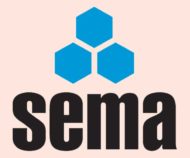Our first question this month is asking about Brace Replacement and our second asks about Rack Changes.
 Brace Replacement
Brace Replacement
Q. Is it a safe and acceptable procedure to change the bottom horizontal brace on a rack (6 levels high) whilst the rack is loaded?
A. There is no definitive reply that can be given to your question regarding bracing replacement as the answer depends on a number of factors which are specific to the racking manufacturer, the installation, the actual frame and the reason for changing the bracing member.
A risk assessment by a competent person is required to determine whether the bracing member can be changed safely without unloading a rack. This assessment should take into account all the necessary hazards which may include the following:
– is the bracing bolted or welded to the upright?
– are the base plates bolted to the floor slab?
– is there a possibility of any loads falling from above the working area?
– is there a possibility, due to the damage to the bracing or the loading on the frame, of any movement of the uprights when the horizontal is removed?
– could the ongoing operations in the warehouse have any effect on the racking and loads in the vicinity of the maintenance work?
The risk assessment should be specific to the circumstances of the particular location and should include the particular maintenance requirements of the manufacturer which may prohibit the maintenance of the loaded racking. SEMA would normally recommend unloading at least one bay either side of the component being worked on.
Rack Changes
Q. We have just had some racking assembled in a newly built warehouse. The question I have is after the work was done the warehouse supervisor decided that some of the beams were not where he wanted them so lifted them out and re-fitted them at the heights that he wanted them to be, I have stated that in my opinion he should not have done this as he is neither trained or qualified to do it. Am I right?
A. You are correct, rack beams should not be moved without reference to the supplier as this has the potential to seriously change the carrying capacity of the rack. You should refer to the Load notice attached to the racking which includes a prohibition stating “Do not alter the structure without either checking effects against manufacturers’ technical data or obtaining approval from supplier”.
As an employer you have a responsibility to tell your employees how to use their work equipment safely and, if the carrying capacity of the rack is changed, and you have not told the employees of the effect of this change then there is an increased possibility of an accident.
As your warehouse supervisor has discovered racking can easily be adjusted to changing requirements. When such a change is made however it affects the load carrying capacity of the upright and sometimes also the beam – hence the advice given on the load notice. If a beam is lifted the unbraced length of the upright is longer and the upright will have less carrying capacity. There is no quick and easy way to calculate such changes and it is normally best to go back to the supplier and ask for revised load carrying capacity based on the proposed new geometry. There will usually be a charge for this work and new safe load notices should be fitted as part of this assessment.
Should you ever have a situation that it is not possible to obtain this information from a supplier there are consultants who can do the necessary calculations however they will usually be more expensive as they will need to work from first principles rather than by modifying existing calculations prepared when the rack was supplied originally. SEMA can help in indicating some consultants that can carry out such work. SEMA Annual Safety Conference 2020 – a date for your diary
The 2020 SEMA Safety Conference has been scheduled for Thursday, 5 November; the venue will be the National Motorcycle Museum, Solihull. For full details and a booking form contact SEMA at enquiry@sema.org.uk
SEMA Rack Safety Awareness and Inspection Courses
SEMA runs a one-day safety course on Rack Safety Awareness and Inspection. These courses are aimed at end users, giving an in-depth look at the need for inspections, how to conduct an assessment and what actions to take when this is completed.
SEMA Approved Rack Inspectors Qualification
Aimed at professionals who conduct rack surveys as an integral and significant part of their duties. It involves delegates in undertaking an in-depth SEMA Course, together with an examination and practical assessment.
SEMA Publications
SEMA has 26 publications in stock – Codes of Practice, ‘Guides’ and European documents.
SEMA USERS Club
SEMA runs a USERS Club designed to be of benefit to purchasers and users of storage equipment. Members receive newsletters, access to specialised events and discounted rates on publications and codes of practice.
SEMA
w: www.sema.org.uk




Comments are closed.